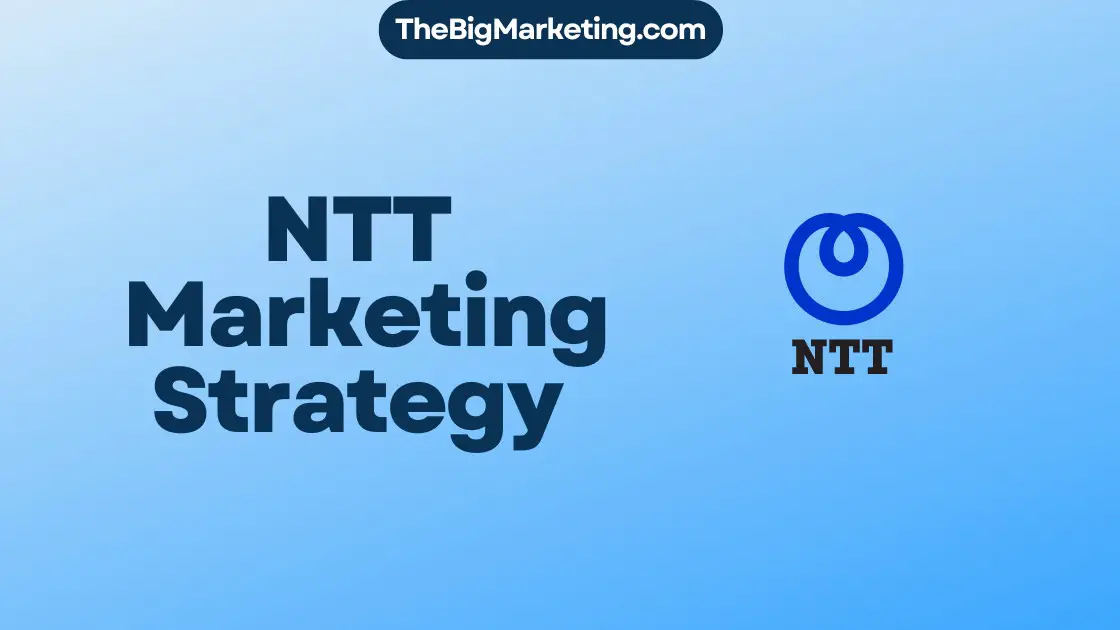Cross-selling is a fundamental practice in marketing that aims to boost revenue and build stronger relationships with customers. It involves offering additional products or services that complement a customer’s initial purchase. By understanding your audience and their needs, you can strategically recommend relevant products or services that enhance their overall experience.
Implementing effective cross-selling techniques can have numerous benefits for your business. Not only does it increase sales revenue, but it also helps deepen customer loyalty and satisfaction. When done correctly, cross-selling allows you to fulfill more of your customers’ needs, making them less likely to go to your competitors for similar products or services.
Key Takeaways:
- Cross-selling involves offering additional products or services that complement a customer’s initial purchase.
- It can increase sales revenue, deepen customer loyalty, and improve overall customer satisfaction.
- Understanding your audience and their needs is crucial for effective cross-selling.
- By recommending relevant products or services, you can enhance the customer’s experience and value.
- Implementing cross-selling techniques strategically can help your business grow and succeed.
What is Cross-Selling?
Cross-selling is the practice of encouraging customers to purchase additional products or services in conjunction with their primary purchase. It involves offering related or complementary items that can enhance the customer’s initial purchase.
For example, a fast-food franchise may cross-sell by offering customers additional items like fries and a milkshake to go along with their burger. In an ed-tech company, cross-selling could involve pitching additional products that complement the initial purchase, such as offering curriculum planning and classroom scheduling software to a college that has purchased academic reporting software.
Cross-selling can be a strategic way to generate extra revenue and improve customer satisfaction.
Cross-Selling Examples
Here are a few cross-selling examples that illustrate how businesses can effectively implement this strategy:
- A clothing store offering matching accessories, such as belts and shoes, to customers purchasing a new dress.
- An electronics retailer suggesting a protective case and extra charging cables to customers buying a new smartphone.
- An online bookstore recommending related titles or similar authors to customers purchasing a specific book.
By cross-selling, businesses can not only increase their sales but also enhance the overall customer experience by providing relevant and valuable add-on products or services.
Cross-Selling Strategies
Implementing effective cross-selling strategies can help businesses maximize their revenue potential. Here are some strategies to consider:
- Segment your customer base: Analyze customer data and create segments based on purchasing behavior, preferences, or demographics. This allows for more targeted cross-selling approaches.
- Personalize recommendations: Leverage customer data to personalize cross-selling recommendations. Provide product suggestions that align with previous purchases or browsing history.
- Create product bundles: Offer discounted bundles or packages that combine complementary products or services. This encourages customers to make additional purchases while perceiving added value.
- Utilize customer feedback: Gather feedback from customers to identify gaps in their needs and preferences. Use this feedback to develop cross-selling offers that address those specific pain points or desires.
- Train your sales team: Provide training to your sales team to ensure they have a deep understanding of your product offerings and can effectively promote cross-selling opportunities. They should be knowledgeable about the benefits and features of the additional products or services.
By employing these cross-selling strategies, businesses can create a seamless and personalized shopping experience, resulting in increased customer satisfaction and revenue.
What is Upselling?
Upselling is a sales strategy that focuses on encouraging customers to upgrade their purchase to a higher-priced or upgraded version of the product or service they originally intended to buy. The goal is to promote additional features or enhancements that can enhance the value and price of the customer’s purchase.
For example, in the fast-food industry, upselling can involve offering customers options to add premium toppings or upgrade to a higher-quality cut of beef for an additional fee. In the software industry, upselling could mean offering customers higher-tier plans with advanced features that cater to their evolving needs.
Unlike cross-selling, which offers related or complementary products, upselling aims to sell a more advanced or premium version of the original purchase. This approach allows businesses to increase their average transaction value and maximize revenue.
Benefits of Upselling:
- Increases revenue by encouraging customers to upgrade their purchase
- Enhances customer experience with higher-quality or advanced products
- Boosts customer satisfaction by offering tailored solutions
- Improves customer loyalty and lifetime value
To effectively implement upselling techniques, businesses must fully understand their customers’ needs and preferences. By actively listening to customers and identifying opportunities throughout the sales process, businesses can offer relevant upgrades that provide genuine value. Moreover, upselling requires a customer-centric approach to ensure that offers are well-targeted, personalized, and transparent.
The Difference Between Cross-Selling and Upselling
When it comes to increasing sales and driving revenue, cross-selling and upselling are two effective strategies that businesses can utilize. However, it’s important to understand the key differences between these approaches in order to implement them successfully.
Cross-selling involves offering related or complementary items that enhance the customer’s initial purchase. This strategy aims to generate additional revenue by encouraging customers to make additional purchases. For example, a customer buying a laptop may also be offered accessories like a laptop bag or wireless mouse to complement their purchase.
Upselling, on the other hand, focuses on selling a higher-priced or upgraded version of the original product. The goal of upselling is to increase the value of the customer’s current purchase. For instance, a customer purchasing a basic cable package may be offered a premium package with additional channels and features at a higher price point.
Both cross-selling and upselling have their own benefits. Cross-selling allows businesses to not only increase sales revenue but also improve customer satisfaction by offering products or services that complement the customer’s needs. This approach can create a more comprehensive solution for customers and build stronger relationships.
Upselling, on the other hand, enables businesses to maximize the potential value of each customer by encouraging them to upgrade to a higher-priced product or service. This can result in increased revenue and profitability for the business, as well as a potential long-term increase in the customer’s lifetime value.
Ultimately, the choice between cross-selling and upselling depends on the specific goals and needs of the business. It’s important to consider factors such as the target market, product offerings, and customer preferences when deciding which strategy to implement.
By understanding the differences between cross-selling and upselling, businesses can effectively tailor their sales approach to maximize revenue and customer satisfaction.
How to Cross-Sell and Upsell
Cross-selling and upselling can be highly effective sales techniques when implemented correctly. To effectively cross-sell and upsell, it is crucial to have a deep understanding of your audience and their specific needs. By creating customer personas and mapping out their journeys, you can identify the most opportune moments for cross-selling and upselling.
It is important to go beyond simply offering additional products and services and instead focus on addressing the problems and challenges your customers may have. By presenting relevant solutions through cross-selling and upselling, you can demonstrate the value and benefit of purchasing additional items.
Active listening plays a key role in successful cross-selling and upselling. Pay attention to customer signals, such as expressed needs or preferences, and use them as cues to make your offers. This ensures that you approach customers with appropriate cross-selling and upselling opportunities at the right time.
By following these best practices, you can effectively increase sales and enhance customer relationships through cross-selling and upselling.
Best Practices for Cross-Selling and Upselling:
- Understand your audience and their needs
- Create customer personas to identify opportunities
- Map out customer journeys to pinpoint key moments
- Offer relevant solutions to address customer challenges
- Practice active listening and pay attention to customer signals
How to Encourage Your Team to Upsell and Cross-Sell
Encouraging your sales team to implement effective cross-selling and upselling strategies is critical to driving revenue and deepening customer relationships. By emphasizing the benefits of these techniques, providing proper training and resources, and fostering a culture of customer-centricity, you can maximize sales opportunities and enhance customer satisfaction.
1. Communicate the Benefits
Start by clearly communicating the benefits of cross-selling and upselling to your team. Highlight how these strategies can increase revenue, improve customer loyalty, and contribute to the overall success of the business. Explain the value of offering additional products or services that meet customer needs and enhance their experience.
2. Provide Training and Resources
Equip your sales team with the necessary training and resources to effectively implement cross-selling and upselling strategies. This includes product knowledge, understanding customer buying behaviors, and developing persuasive communication skills. Provide training sessions, workshops, and access to sales enablement tools that can support their efforts.
3. Regular Check-Ins
Regularly check in with your sales team to identify upselling and cross-selling opportunities with existing customers. Encourage open and ongoing communication to understand customer needs, preferences, and pain points. This information can help your team proactively identify suitable cross-selling opportunities and personalize their approach accordingly.
4. Empower Active Listening
Empower your team to actively listen to customers and deeply understand their needs and goals. Train them to ask probing questions and actively engage in conversations to uncover opportunities for cross-selling or upselling. Strengthening their listening skills will enable them to make relevant and valuable recommendations.
5. Cultivate a Cross-Selling Culture
Foster a culture of cross-selling and upselling within your team by recognizing and celebrating successful cross-selling achievements. Encourage team members to share their experiences and best practices to inspire others. Additionally, reward and incentivize those who consistently excel in these strategies to further drive team motivation.
| Benefits of Cross-Selling | Benefits of Upselling | |
|---|---|---|
| Increased Revenue | By encouraging customers to purchase additional products or services, cross-selling boosts sales revenue. | Upselling higher-priced or upgraded versions of products can result in higher transaction values and increased revenue. |
| Improved Customer Satisfaction | Offering related or complementary products enhances the customer experience and meets their evolving needs. | Upselling allows customers to upgrade to better or more suitable options, enhancing their satisfaction with the purchase. |
| Deeper Customer Relationships | By understanding customer needs and providing personalized recommendations, cross-selling strengthens customer relationships. | Upselling builds trust and loyalty by offering value-adding options that align with customer goals. |
Benefits of Cross-Selling
Cross-selling offers numerous benefits for businesses that implement effective sales strategies. By encouraging customers to make additional purchases, businesses can increase their sales revenue and drive profitability. However, the benefits of cross-selling extend beyond financial gains alone.
One of the key advantages of cross-selling is the ability to improve customer satisfaction. By offering related or complementary products, businesses can enhance the overall experience for customers and provide them with solutions that address their needs. When customers feel that a company understands their requirements and can fulfill more of their needs in one place, they are less likely to seek out other options.
Furthermore, cross-selling enables businesses to deepen customer relationships. It allows companies to establish themselves as trusted advisors by recommending relevant products or services to their customers. By consistently offering valuable suggestions that align with their customers’ preferences, businesses can create a sense of loyalty and trust, leading to long-term customer retention.
In addition, effective cross-selling can increase the lifetime value of customers. By encouraging additional purchases, businesses are more likely to foster repeat business and encourage customers to become advocates for their brand. Satisfied customers tend to share positive experiences with others, resulting in valuable word-of-mouth marketing and the potential for new customer acquisition.
To illustrate successful cross-selling in action, consider the example of an e-commerce retailer. If a customer purchases a yoga mat, the retailer may recommend yoga blocks, straps, or workout apparel that complements the original purchase. By tailoring cross-selling offers based on a customer’s interests and previous purchases, businesses can maximize their chances of success.
Overall, cross-selling has proven to be a valuable strategy for businesses looking to increase sales revenue, improve customer satisfaction, deepen relationships, and maximize the lifetime value of customers. By implementing effective cross-selling techniques, companies can create a win-win situation that benefits both their bottom line and their customers.
A Successful Cross-Selling Example
Let’s take a closer look at a real-life example of effective cross-selling by one of the leading technology companies, Apple. When customers purchase an iPhone, Apple often recommends additional accessories such as AirPods, cases, or wireless chargers. This cross-selling strategy not only enhances the customer’s experience by offering complementary products but also increases the overall value of the purchase for the customer.
| Benefits | Description |
|---|---|
| Increased Sales Revenue | Cross-selling encourages customers to make additional purchases, boosting overall sales revenue. |
| Improved Customer Satisfaction | By offering related or complementary products, businesses enhance customer experience, ultimately increasing satisfaction levels. |
| Deepened Customer Relationships | Cross-selling allows businesses to establish themselves as trusted advisors, fostering loyalty and trust through personalized recommendations. |
| Increased Lifetime Value of Customers | Encouraging additional purchases can lead to repeat business and advocacy, resulting in long-term profitability. |
Potential Drawbacks of Cross-Selling
While cross-selling is an effective sales strategy with numerous benefits, it is important to consider the potential drawbacks that may arise. Understanding these drawbacks and addressing them strategically can help businesses maximize the success of their cross-selling efforts.
Risk of Appearing Pushy or Self-Seeking
One potential drawback of cross-selling is the risk of appearing pushy or self-seeking to customers. If cross-selling is done incorrectly, customers may perceive it as a sales tactic aimed solely at increasing profits, rather than providing genuine value. To avoid this, it is crucial to approach cross-selling with a customer-centric mindset. Focus on offering products or services that truly enhance the customer’s experience and address their needs. By genuinely providing value through cross-selling, businesses can build trust and maintain strong customer relationships.
Impact on Customer Loyalty
Another potential drawback of cross-selling is the negative impact it can have on customer loyalty if not executed effectively. If cross-selling efforts are not well-targeted or personalized, customers may feel overwhelmed or annoyed by constant upselling attempts. This can lead to a decrease in customer satisfaction and potentially result in lost business. To mitigate this risk, businesses should analyze customer data and metrics to gain insights into customer preferences and purchasing behaviors. By using this information to tailor cross-selling campaigns, businesses can ensure that they are offering relevant and valuable products or services to each individual customer.
Pros and Cons of Cross-Selling
| Pros | Cons |
|---|---|
| Increased revenue through additional sales | Perceived pushiness if done incorrectly |
| Improved customer satisfaction and relationships | Potential negative impact on customer loyalty |
| Opportunity to fulfill more customer needs | Requires careful targeting and personalization |
| Increase in customer lifetime value | Requires analysis of customer data and metrics |
Overall, cross-selling can be a valuable sales strategy, but businesses need to be attentive to potential drawbacks. By avoiding pushy tactics, personalizing cross-selling efforts, and analyzing customer data, businesses can overcome these challenges and make cross-selling a successful part of their overall marketing strategy.
Conclusion
Cross-selling is a valuable marketing strategy that can drive revenue and improve customer relationships. By offering related or complementary products to customers, businesses can increase sales and enhance customer satisfaction. To be effective at cross-selling, it is crucial to understand your audience and tailor your offerings to their specific needs and preferences. This requires mapping out the customer journey, identifying key touchpoints, and providing solutions that address their pain points.
A customer-centric approach is essential when implementing cross-selling techniques. It is important to avoid being pushy or self-seeking and instead focus on providing genuine value to the customer. By actively listening to their needs and offering relevant recommendations, businesses can build trust and loyalty with their customers.
Proper planning and execution are key to successful cross-selling. By analyzing customer data and metrics, businesses can identify the most effective cross-selling opportunities and measure the impact of their campaigns. This allows for continuous improvement and optimization of cross-selling strategies.
Overall, effective cross-selling requires a combination of understanding your audience, offering relevant solutions, and maintaining a customer-centric approach. When done right, cross-selling can be a powerful tool for business growth, increasing revenue, and creating long-term customer relationships.





